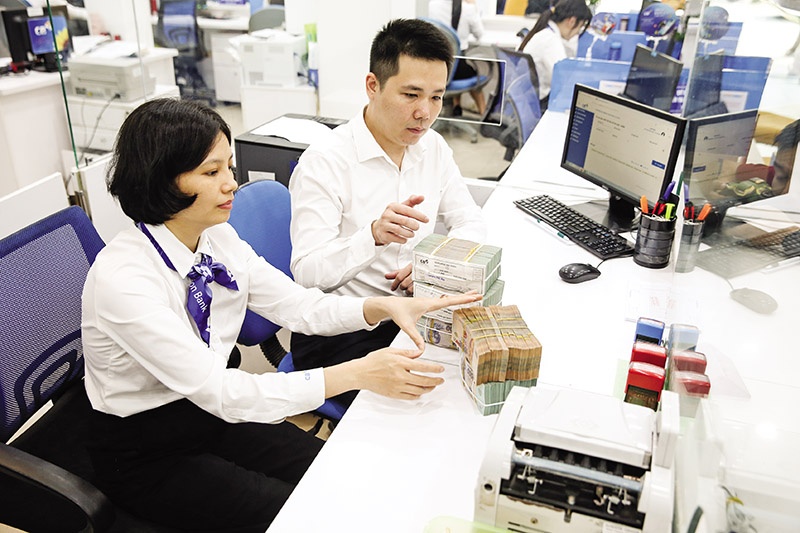Credit sees steady growth towards year-end
Credit sees steady growth towards year-end
Banks witnessed improved credit growth in the third quarter of this year, driven by higher capital demand ahead of the year-end period, contributing to ensuring stable economic development.

Techcombank's credit grew by 17.4 per cent in the third quarter compared to the beginning of the year, hitting around $26 billion.
The bank expanded lending to individual customers, particularly for home purchases, boosting profitability from loans with stable yields.
Personal customer loans surged 6 per cent to a record $8.06 billion, while corporate credit eyed a 2.9 per cent hike, reaching $16.4 billion.
Meanwhile, MB attained a 13.5 per cent credit growth rate as of the end of September.
The bank's credit balance to individual customers grew robustly, reaching $27.7 billion, up 15 per cent compared to the end of last year, with a primary focus on aiding production, business, and supporting industries.
Meanwhile, by the end of the first nine months, ACB's credit balance rose approximately 14 per cent since the beginning of the year, with the potential to reach its 18 per cent growth target by year-end.
Capital demand typically rises more in the second half of the year than in the first half.
Southern-based HDBank's credit balance reached almost $17.2 billion, an increase of 16.6 per cent since the outset of the year.
Hanoi-based lender LPBank's credit balance grew 16.1 per cent to reach $13.3 billion, while VIB saw its credit balance improve by 12 per cent compared to the beginning of the year, both well above the industry average of 9 per cent.
Nguyen Duc Lenh, deputy director of the State Bank of Vietnam (SBV)’s Ho Chi Minh City branch, noted that lending activities in the area have maintained growth momentum recently.
Credit balance expanded by just 0.98 per cent in October, compared to 1.1 per cent in September and 0.75 per cent in August.
According to Lenh, credit business in the last two months of the year typically plays a vital role in supporting businesses and driving economic growth.
The deposit volume of credit institutions in the area reached over $160 billion in the first 10 months of the year, up 8.9 per cent compared to the end of last year, which outpaced credit growth, improving the chances of meeting year-end capital needs effectively.
"As of October 31, credit has expanded 10.08 per cent compared to the end of 2023, and 16.65 per cent compared to the same period in 2023," said SBV Governor Nguyen Thi Hong.
Earlier, the SBV reported that as of September 30, credit had risen 9 per cent from the start of the year and 16 per cent on-year. The nine-month credit growth was also significantly higher than the same period last year, which saw a 6.95 per cent hike.
These figures indicate that credit is gaining steady momentum. Compared to the 15 per cent annual growth target, banks still have considerable room to extend credit in the last two months. To stimulate credit growth, banks are actively working to lower lending rates for both corporate and individual customers.
SBV has instructed credit institutions to reduce lending rates since the second quarter, making it easier for businesses to access capital.
Lending rates have dropped significantly lately, after declining by over 2.5 per cent in 2023 and continuing to fall by 0.76 per cent as of October 20 compared to the end of 2023.
As of now, banks, such as ACB, HDBank, LPBank, and Techcombank, have completed 80 per cent of their credit growth targets given by the SBV at the beginning of the year. These banks have been granted higher credit growth limits, ranging from 18 to 18.7 per cent. With these increased limits, there remains ample room to grow and provide funding to support the economy.
Dr. Nguyen Huu Huan from the University of Economics, Ho Chi Minh City, observed that capital demand typically rises more in the second half of the year than in the first half.
"The banking sector’s goal of achieving 15 per cent credit growth is therefore not overly challenging. To prepare for year-end credit demands, banks are intensifying efforts to mobilise capital and ensure liquidity. However, it is important to manage asset quality to relieve bad debt threats," said Huan.


























